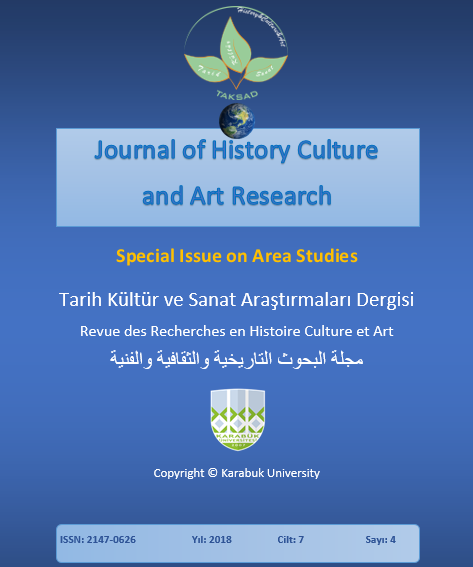Numerical Names as Nominative Base of the Tatar Language System
DOI:
https://doi.org/10.7596/taksad.v7i4.1821Keywords:
Nominative unit, Category of quantity, Word formation, Family of words, Numeral-based derivatives.Abstract
The problems of word formation intensively studied during all periods of the development of linguistics have not lost their relevance at the present time, since word formation is the most important means of replenishing the vocabulary of the language. The vocabulary of the language is in a state of almost continuous development, reflecting the changes that happen in all areas of people’s lives and activities. The continuous process of creating new words in a language is a complex cognitive process that takes place under the influence of extralinguistic factors, nevertheless it follows the existing prototypes used by analogy in accordance with structural models. Speaking of the word formation model, we mean a certain set structure that has a generalized categorical meaning and develops a number of other hierarchically related lexical meanings, implying not only a structure, but also certain semantics. The word-formation model is at the beginning of the word-forming process, determining how the initial elements of the language build a new name. Of particular interest for research in this regard are the derived words that are formed from the stems with semantics of quantity. As is known, the names of numerals are not formed from other parts of speech, but they themselves freely participate in the word-formation of nouns, adjectives, adverbs, verbs and other parts of speech. In Tatar linguistics there are practically no special studies concerning the numerals as a nominative base of the Tatar language system. The need to study the names of numerals as an independent motivational unit of language determines the relevance of this work. The results of the research can be used to work out lecture courses in general linguistics, lexicology, morphology, word formation of the Tatar language.
References
Akhmetzyanova, L. & Gilazetdinova, G. (2018). Lexico-semantic and linguo-stylistical analysis of A. Vvedensky's and D. Kharms' art texts. XLinguae. Vol. 11. Issue 2, pp. 455-470.
Gabdrakhmanova, F.; Zamaletdinov, R. & Zamaletdinova, G. (2016). ‘Comparative associative analysis of the meanings of the Tatar and English linguistic cultures. On the example of the Lexemes Gaila and family’. Journal of Language and Literature, Vol. 7. Issue 3, pp. 277-281.
Gabdrakhmanova, F.; Sattarova, M. & Nurmukhametova, R. (2016). Traditions and customs as means of formation of eating behavior of Tatar people. Journal of Language and Literature, Vol. 7, Issue 2, рр. 169-172.
Ganiev, F. A. & Gaffarova, F. F. (2001). The Russian-Tatar Dictionary. Kazan: Tatar Publishing.
Ganiev, F. A. (2005). Modern Literary Tatar: Suffix and Phonetic Word Formation. Kazan: Dom Pechati.
Khusnullina, G.; Bolgarova, R.; Islamova, E. & Zholshayeva, M. (2017). ‘Comparisons of dishware names in Tatar and Russian languages. Journal of Interdisciplinary Research. Vol. 7, Special Issue 2, pp. 112-115.
Tatar Grammar (1993). In two volumes. Kazan: Tatar Publishing.
The Explanatory Dictionary of the Tatar Language (2015). Volume I. (А-В). Kazan.
The Phraseological Dictionary of the Tatar Language (1989). Volume I. Kazan, Tatar Publishing.
The Phraseological Dictionary of the Tatar Language (1990). Volume II. Кazan, Tatar Publishing.
The Tatar-Russian Dictionary (1988). Kazan: Tatar Publishing.
Downloads
Published
How to Cite
Issue
Section
License
All papers licensed under Creative Commons 4.0 CC-BY.- Share — copy and redistribute the material in any medium or format
- Adapt — remix, transform, and build upon the material for any purpose, even commercially.
Under the following terms:
Attribution — You must give appropriate credit, provide a link to the license, and indicate if changes were made. You may do so in any reasonable manner, but not in any way that suggests the licensor endorses you or your use.
- No additional restrictions — You may not apply legal terms or technological measures that legally restrict others from doing anything the license permits.







